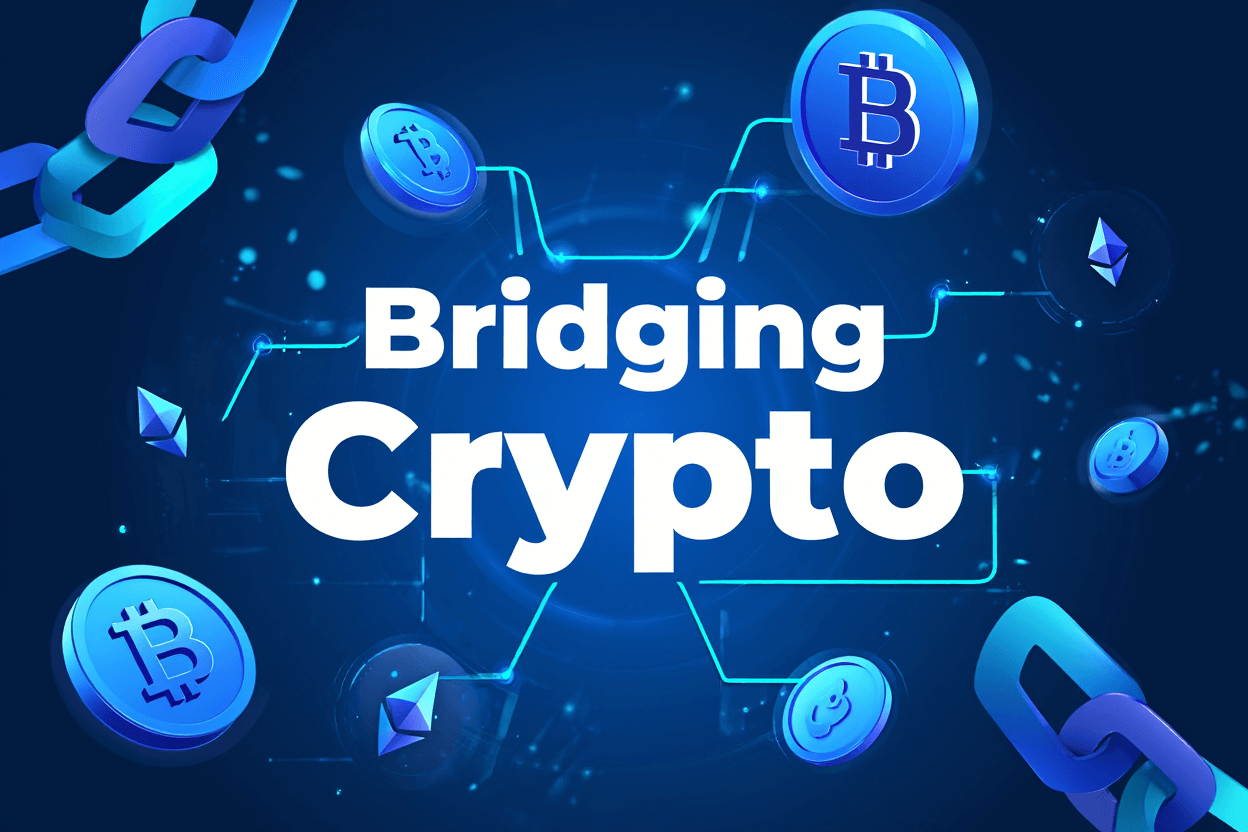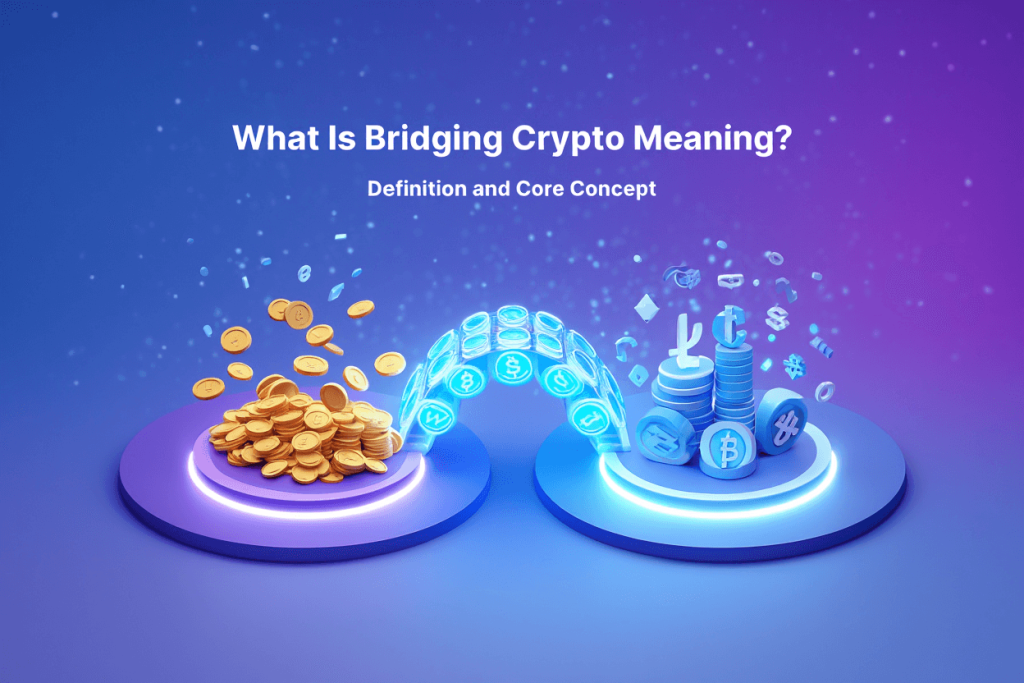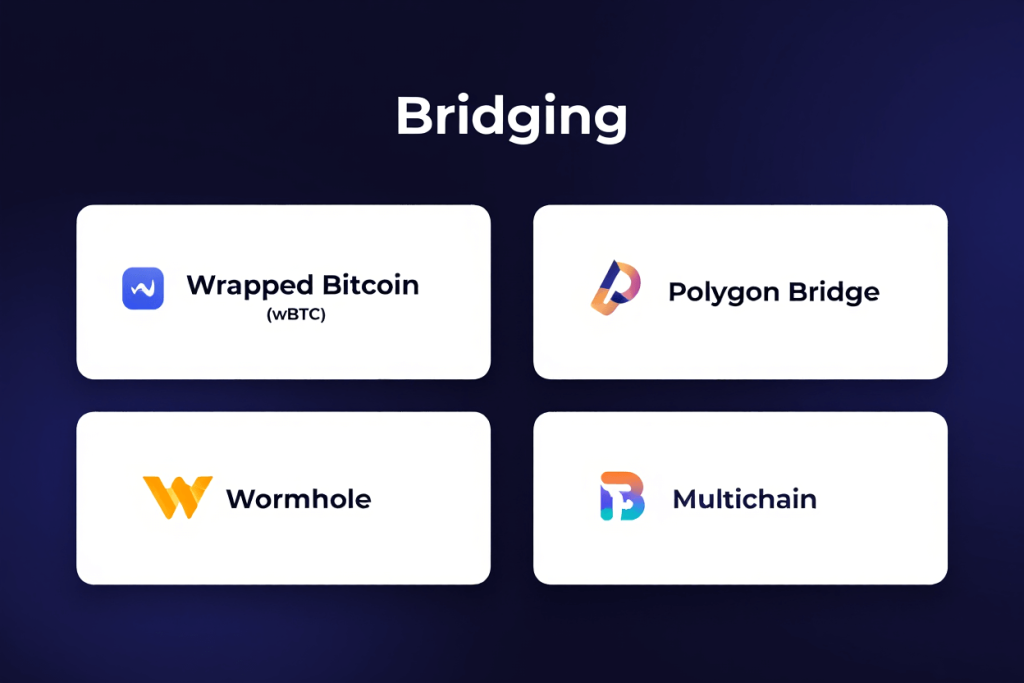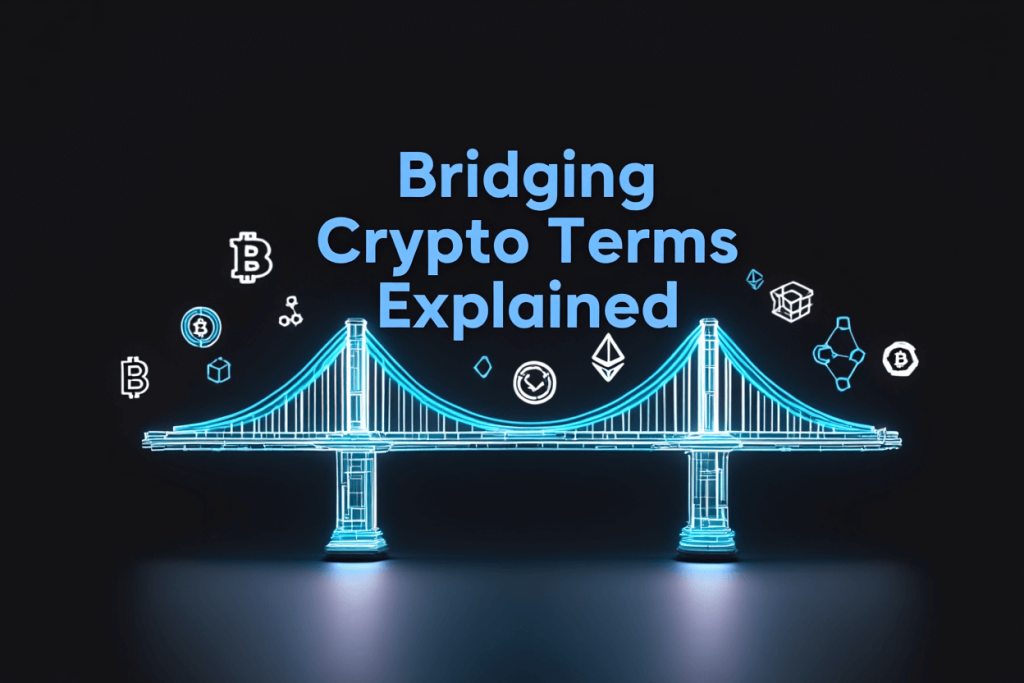Physical Address
304 North Cardinal St.
Dorchester Center, MA 02124
Physical Address
304 North Cardinal St.
Dorchester Center, MA 02124

Bridging crypto meaning refers to the process that allows digital assets or data to move across different blockchains using special protocols known as bridges. Think of a crypto bridge like a digital highway or a translator connecting separate blockchain cities, such as Ethereum, Solana, and Bitcoin. Just as highways let traffic pass between cities, bridges let cryptocurrencies travel across isolated blockchain networks.
Understanding how bridging works is crucial for both investors and newcomers because it expands access to DeFi projects, NFTs, and emerging opportunities beyond a single blockchain’s limitations.
At Web Tai Chinh, the mission is to make financial concepts like bridging crypto clear for investors, empowering smarter decisions in an evolving digital landscape.
Blockchains, by design, operate in isolated ecosystems. This lack of interoperability means one blockchain (for example, Ethereum) can’t natively interact with another (like Solana) without help. Crypto bridges solve this by facilitating cross-chain transfers and communications, usually using smart contracts or external validators.

Bridge: A protocol allowing assets/data to cross from one blockchain to another.
Cross-chain: Activities/transfers involving more than one blockchain network.
Wrapped Token: A representation of one asset (e.g., BTC) that exists on another blockchain (e.g., wBTC on Ethereum).
Interoperability: The ability of different blockchains to work together.
Analogy: Imagine sending funds internationally between banks, your money doesn’t physically travel, but messages and reflected balances do. In crypto, tokens move as digital representations across otherwise disconnected networks.
| Asset Type | Native | Bridged |
|---|---|---|
| BTC on Bitcoin | Yes | No |
| wBTC on Ethereum | No | Yes (bridged BTC) |
This foundation explains why crypto bridging is essential and leads directly into the next question: Why do we need it?
Ethereum co-founder Vitalik Buterin highlighted the challenge: Without interoperability, we miss out on a truly global blockchain economy. Bridging empowers innovation, delivers flexibility, and accelerates market growth, opening doors for retail and institutional investors alike.
Next, let’s explore how crypto bridging actually works behind the scenes.
Learn more about high-risk investment mindsets in our Degen Crypto Meaning guide.
Transferring assets across blockchains involves several distinct steps. Here’s a simplified breakdown of a typical bridge transfer:
Key Mechanisms: These usually follow a lock-mint-burn process. Security is maintained through cryptographic proofs, decentralized validators, or trusted custodians.
Example: Bridging Bitcoin to Ethereum using Wrapped Bitcoin (wBTC) involves locking your BTC and minting an equivalent amount of wBTC (an ERC-20 token) on Ethereum.
Main bridge platforms: Wrapped Bitcoin (BTC → ETH), Polygon Bridge, Wormhole, and Multichain all use similar step-by-step systems, with varying security and complexity.
Understanding these mechanics leads naturally to a discussion of the different models and types of bridges used in crypto today.
| Bridge Type | Security Model | Speed | Fees | Examples | Pros | Cons |
|---|---|---|---|---|---|---|
| Custodial | Centralized (managed by trusted party) | Usually fast | Medium | wBTC, Binance Bridge | Easy to use, faster support | Counterparty risk, central failure |
| Non-custodial | Smart contract / decentralized | Varied | Usually lower | Polygon Bridge, Wormhole | Trustless, transparent | Smart contract risk, complex setup |
| Application-specific | Customized for one use | Optimized | Optimized | wETH Bridge (ETH projects) | High efficiency, specific needs | Limited flexibility |
| General-purpose | Multi-chain, adapts | Good | Medium to high | Multichain, AnySwap | Wide support, versatile | Broader attack surface |
Understanding whether a bridge is custodial (centralized and managed by a team) or non-custodial (run by smart contracts or decentralized networks) directly impacts user safety. Trusted (permissioned) bridges require faith in a specific group, while trustless bridges rely on open-source code and decentralized verification, important for those prioritizing security and sovereignty in 2025’s crypto ecosystem.
Here are some real-world examples of bridging in crypto:

Scenarios include moving assets for DeFi yield hunting, buying or selling NFTs on different chains, or making cross-chain payments. Bridges vary in popularity, liquidity, and risk, for example, wBTC boasts billions in volume, while Wormhole sees high NFT activity but experienced a high-profile exploit. Always review volume, security, and reputation before bridging your crypto.
Explore more crypto insights at our Cryptocurrency Category.
| Problem | Quick Fix |
|---|---|
| Tokens not arrived | Check block explorers; contact support. |
| Wrong network | Add correct network to wallet and refresh. |
| Stuck transaction | Wait, then re-check status; avoid double-sending. |
| Do’s | Don’ts |
|---|---|
| Use well-audited, reputable bridges | Bridge large sums without research |
| Triple-check all addresses and URLs | Trust random links or new projects blindly |
| Start with test transfers (small amounts) | Ignore transaction confirmations or errors |
Crypto bridging technology is advancing rapidly for 2025. Innovations like Layer-0 protocols (e.g., Polkadot, Cosmos IBC) and universal bridge standards are set to significantly reduce risk, increase speed, and improve interoperability. Projects are piloting trustless models, zero-knowledge proofs, and better user interfaces, making bridging safer and more accessible.
There’s also a growing regulatory focus, with more oversight and compliance expected as bridge platforms become critical to cross-chain DeFi, global payments, and NFT marketplaces. Experts anticipate that by the end of 2025, bridges could be as seamless, and necessary, as Internet protocols are today.
| Today | The Near Future |
|---|---|
| Manual steps; risks remain high; fragmented user experience | Automated, unified interfaces; lower risks; industry standards emerging |
Some simple definition of terms:

| Term | Simple Definition |
|---|---|
| Bridge | A tool/protocol for moving assets/data between blockchains. |
| Wrapped Token | A tokenized version of an asset on another chain (e.g., wBTC on Ethereum). |
| Lock-mint-burn | The process for bridging: lock original, mint representation, burn to reverse. |
| Custodial | Managed by a specific team or entity. |
| Non-custodial | Operated by decentralized logic or smart contracts. |
| Validator | Participant confirming bridge transactions. |
| Interoperability | Ability of different blockchains to work together. |
| Liquidity | Total available value or tokens in a system/bridge. |
Crypto bridging is reshaping how users and investors interact with blockchain ecosystems. By enabling secure asset transfers, unlocking new DeFi and NFT opportunities, and driving innovation, bridges are a cornerstone of the crypto trends shaping 2025. But with new possibilities come security challenges, so understanding how bridges work, their risks, and best practices is vital for anyone navigating the evolving world of blockchain interoperability. As technology advances and standards improve, crypto bridging is set to become even more seamless, secure, and essential for mainstream adoption.
Related reads in the crypto category:
Web Tai Chinh is your trusted gateway to up-to-date financial news and insights, giving you the knowledge needed to make confident investment decisions and understand the ever-changing world of finance, including the latest on crypto trends and blockchain innovation.
📞 Contact: 055 937 9204
✉️ Email: webtaichinh@gmail.com
📍 Address: 13 Ho Tung Mau, An Binh, Di An, Binh Duong